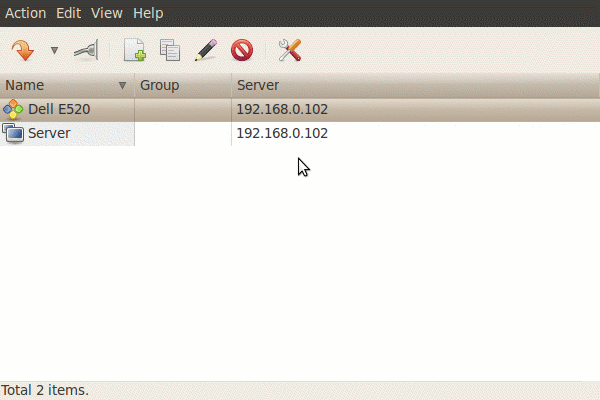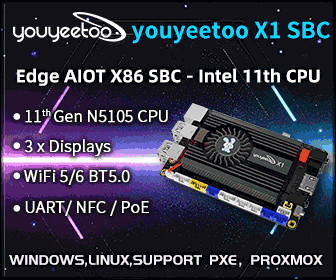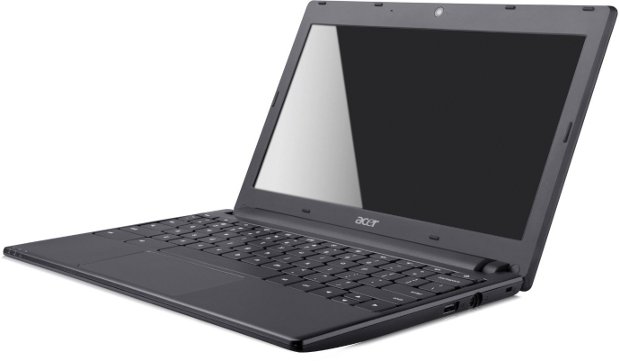Android 4.0.1 can now run on ST Ericsson Nova A9500 low cost development board “snowball”. The build is available at https://android-build.linaro.org/builds/~linaro-android/staging-snowball/. You can Android 4 (ICS) it in action in the Snowball board in the video build using build number 84. This is a bit sluggish since Android 4 currently lacks hardware acceleration on this development board but Linaro and the igloocommunity will implement it in the next few weeks. If you have an ST Ericsson snowball board, here are the instructions to try the latest Android 4.0 build for the platform: Get the images: wget –no-check-certificate https://android-build.linaro.org/jenkins/job/linaro-android_staging-snowball/lastSuccessfulBuild/artifact/build/out/target/product/snowball/boot.tar.bz2 wget –no-check-certificate https://android-build.linaro.org/jenkins/job/linaro-android_staging-snowball/lastSuccessfulBuild/artifact/build/out/target/product/snowball/system.tar.bz2 wget –no-check-certificate https://android-build.linaro.org/jenkins/job/linaro-android_staging-snowball/lastSuccessfulBuild/artifact/build/out/target/product/snowball/userdata.tar.bz2 Get the linaro-image-tools and create the image: bzr branch lp:linaro-image-tools ./linaro-image-tools/linaro-android-media-create –mmc /dev/sdc –dev snowball_sd –system system.tar.bz2 –userdata userdata.tar.bz2 –boot boot.tar.bz2 MINICOM settings: minicom -D /dev/ttyUSB0 -w -C minicom.txt You must setup the boot args as follows: U8500 $ setenv loadbootscript fat load mmc 1:1 ${loadaddr} […]
“Romo” Robot Controlled by Android or iOS Smartphones
Romotive startup has designed “Romo”, a tank-like Robot controlled by Android or/and iOS mobile devices. Peter Seid and Phu Nguyen – Romotive’s co-founders – have raised over 114,000 USD on KickStarter website from more than 1,100 contributors looking to buy the Romo robot. The company has reached its founding target (32,000 USD) and can now move forward on production. You can still get the Robot for 78 USD (+12 USD shipping if you live outside the US) on KickStarter. You’ll need two Android or iOS devices to play with it: one acting as a camera that sits on the “Romo” and the other to control the robot’s movements and receive the camera stream via Wi-Fi. The motors are interestingly controlled by audio signals coming from the smartphone. Romo’s Hardware is composed of the following: A motorized, acrylic base with an accessory port that can be controlled by any smartphone (or […]
Android 4.0 on BeagleBoard and Beagleboard-xM
Sola has written the instructions (in Japanese) to build Android 4.0 (ICS) for Beagleboard and Beagleboard-xM. Here’s the same in English: Get the source code: $ mkdir -p /home/sola/work/ics $ cd /home/sola/work/ics $ export ANDROID_ROOT=$PWD $ repo init -u https://bitbucket.org/sola/android_manifest $ repo sync -j8 Build Android: $ cd $ANDROID_ROOT $ source build/envsetup.sh $ lunch full_beagleboard_xm-eng [for BeagleBoard-xM] $ lunch full_beagleboard-eng [for BeagleBoard] $ time make -j8 Generate the rootfs: $ cd $ANDROID_ROOT/out/target/product/beagleboard_xm/ [for BeagleBoard-xM] $ cd $ANDROID_ROOT/out/target/product/beagleboard/ [for BeagleBoard] $ mkdir rootfs $ sudo cp -a ./root/* ./rootfs/ $ sudo cp -a ./system/* ./rootfs/system/ Build the kernel: $ export ARCH=arm $ export CROSS_COMPILE=$ANDROID_ROOT/prebuilt/linux-x86/toolchain/arm-eabi-4.4.3/bin/arm-eabi- $ cd $ANDROID_ROOT/board/beagleboard/kernel $ make omap3_beagle_android_defconfig $ make uImage modules -j8 Partition the SD card (bootloader, media, rootfs): $ cd $ANDROID_ROOT/board/beagleboard/sdcard $ sudo LANG=C ./mksdcard_beagle.sh /dev/sdx where /dev/sdx depends on your setup (e.g. /dev/sda). Generate boot.scr: $ cd $ANDROID_ROOT/board/beagleboard/bootscript $ ./mkbootscr Copy MLO/u-boot.bin/uImage/rootfs to the SD card: […]
CIFS/Samba Support, USB Drive and Keyboard/Mouse for Android 4.0
Paul O’Brien, founder of modaco, has created a custom kernel with CIFS/SAMBA support, USB drive and keyboard / mouse support for Galaxy Nexus smartphone running Android 4.0 (ICS). This is a temporary download until MCR (MoDaCo Custom ROM) is released. This should be flashed via ‘fastboot flash boot boot.mck.img’ to a device with an unlocked bootloader. This is designed for devices running the I9250XXKK1 / ITL41D (android-4.0.1_r1) ROM. DOWNLOAD – MD5: adf6bcc42205027952630dcf720beada Source: http://android.modaco.com/topic/348882-23-nov-modaco-custom-kernel-cifs-usb-drives-keyboard-mouse/
Remmina : Remote Connection via RDP, VNC, SSH, XDMCP or SFTP
If you need to connect to both Windows and Linux machines remotely, Remmina is what you need. It is an application that can remotely connect to server using VNC, SSH, XDMCP, SFTP and RDP protocols. So that you can connect to a Windows machine using the default RDP (Remote Desktop Protocol) protocol without installing a VNC server. In the screenshot below I setup a Windows RDP and a VNC connection to 192.168.0.102. There are plenty of options. Here’s a screenshot of Remote Desktop Preferences for the RDP client. To install in an Ubuntu or Debian distribution:
|
1 |
sudo apt-get install remmina |
To install it in Fedora:
|
1 |
sudo yum install remmina |
Midgard architecture for Embedded GPUs (Mali-T604 / Mali T658)
I’ve attended a webinar entitled “Harness the power and flexibility of the Midgard architecture for Embedded GPUs” presented Steve Steele, Product Manager at ARM Media Processing Division and sponsored by EETimes. Steve starts to talk about the current GPU architecture “Utgard” used in Mali-200, Mali-300 and Mali-400MP which allows resolutions up to 1080p and are used in many smartphones today including Samsung Galaxy S2 (Mali-400MP) which provides great graphics performance. He then explains how mobile devices are used today and what performance we may except in the future: Mobile As Main compute platform: New UI and Augmented Reality Social Networks and emails Content Creation/consumption 1 Device to multiple screen (e.g LCD screen and TV via HDMI) Evolving Processing Demand: Graphics Complexity multiplied by 25 Increase in screen size (1080p resolution support). Graphics API: Khronos OpenGL ES, Microsoft DirectX 11 Compute API: OpenCL, Renderscript Compute and Direct Compute. After this overview, […]
ChromeBooks Get Cheaper and Chrome OS Update
Google announced that the Wi-Fi only version of the Samsung Chromebooks Series 5 and Acer Chromebooks will drop by 50 USD to to 300 USD. Apparently the Chromebooks sales are not going so well. This may be improving however, as the Samsung Series 5 Wi-Fi 12.1-Inch Chromebook currently ranks 25 in Netbooks (Amazon US) and Acer AC700-1099 Chromebook (Wi-Fi) ranks quite well (maybe after the discount) at position 9 in Netbooks. Still, even after this discount, it seems difficult to justify the price compared to a “real” netbook with hard disk (the Chromebooks use the cloud for storage) and a few other extra features. I have an Acer Aspire One AOD255E that now costs 279 USD on Amazon with a 250 GB hard disk running Windows 7 starter. Unless the Chromebooks price is reduced to about 200 USD I don’t really see it selling like hot cakes even though they […]
Android 4.0 For Blind or Visually Impaired Users
Android 4.0 (ICS) has some interesting features for blind or visually impaired users. With accessibility mode enabled, smartphones such as the Galaxy Nexus will dictate the name of the icons has you touch them and instruct you to tap it if you want to use this application. You can also use 2 fingers to scroll the current and you’ll get audible feedback to know where you scroll. Google has setup a YouTube channel (EyesFreeAndroid) to showcase features and applications available to blind and visually impaired users. Here’s an example below showing the touch exploration tutorial.










